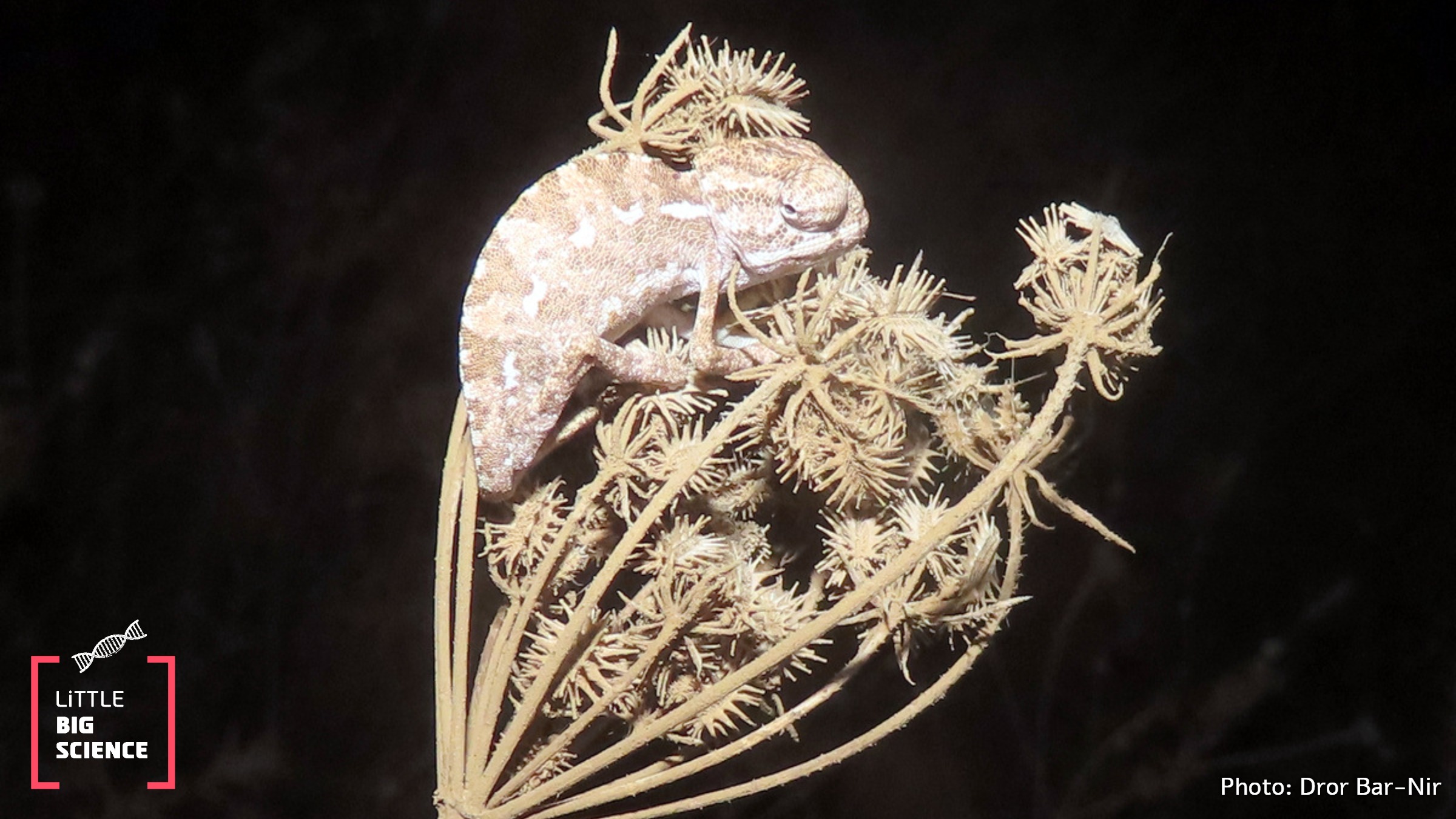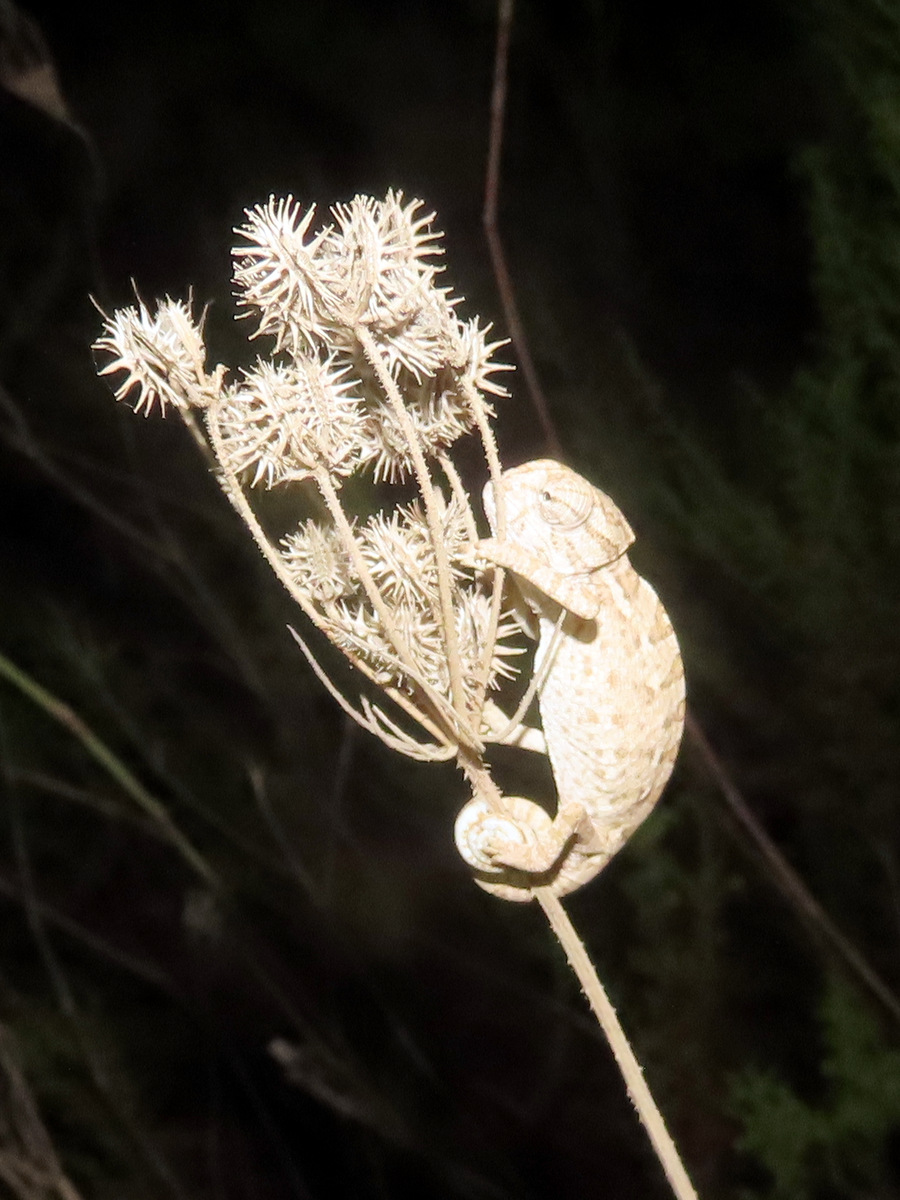
Advertisement
Chameleon hatchlings are spotted in large numbers across Israel at the beginning of autumn.
During a night survey in the Netanya area, dozens of Mediterranean chameleon hatchlings were observed sleeping on carrot plants, as shown in the photographs, as well as on other vegetation.

A Mediterranean chameleon hatchling on wild carrot. Photo: Dror Bar-Nir
The Mediterranean chameleon (Chamaeleo chamaeleon) [1,2], also known as the common chameleon, is widespread in Africa, Europe, and Asia and is the only member of the family Chamaeleonidae [3] found in Israel.
Mediterranean chameleons are active during daytime and solitary. They spend most of their time on plants, using their long tails for gripping and climbing. Their primary diet consists of insects and other arthropods. They capture prey with their tongues, which are 1.5–2 times the length of their body. Each eye is set on the side of the head and can move independently, but while hunting the eyes coordinate and focus on the potential prey [4]. Sexes differ mainly in the base of the tail, which is thicker in males.
Chameleon coloration changes according to environmental conditions, and a dark color may indicate stress. When threatened, a chameleon inflates its lungs, making itself appear much larger, and produces hissing sounds to deter predators.
After mating, the female lays several dozen eggs in a hole she digs in the ground. Usually, both parents die after the eggs are laid, and unlike many other reptiles, the eggs hatch only in the following season, after eight to ten months. The hatchlings are independent from the moment they emerge, but only a few survive to adulthood. Adults reach a length of up to 35 cm.

Adult Mediterranean chameleon, March 2010, Ilanot Forest. Photo: Dror Bar-Nir
Hebrew editing: Smadar Raban
English editing: Elee Shimshoni
Sources and further reading







